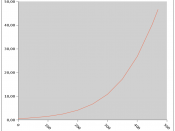Lycette Clarke 09/03/2004
What is Coronary Heart Disease (CHD)?
CHD has two principal forms - angina and heart attacks (myocardial infarction). Both occur because the arteries carrying blood to the heart muscle become blocked or narrowed, usually by a deposit of fatty substances, a process known as arteriosclerosis. Angina is a severe pain in the chest brought on by exertion and relieved by rest. A heart attack is due to obstruction of a coronary artery either as a result of arteriosclerosis or a blood clot: part of the heart muscle is deprived of oxygen and dies.
Basic diagram of the heart as a system
Diagrams from: http://www.pbs.org/wgbh/nova/eheart/human.html
The blockage of the arteries with the excess plaque formed by smoking, alcohol consumption, age (as you get older your risk factor increases) and diet, sex (males are more likely to get CAD), hereditary and the combined contraceptive pill and fat intake
http://www.heartcenteronline.com/myheartdr/common/articles.cfm?ART
This diagram shows the build up of a blockage in an artery. This is most due to the build up of colestral and fats that deposit on the wall of the artery. Colestral is a waxy fat (lipid) which is carried through the blood by lipoproteins. The two main types of lipoprotein, high-density lipoproteins (HLDs) and low density lipoproteins (LDLs)
HLDs (good colestral) carry LDLs (bad colestral) away from the artery walls. LDLs stick to artery walls and can lead to plaque build-up, or arteriosclerosis
Risk factors leading to Coronary Heart Disease
Cigarette smoking, raised blood cholesterol and high blood pressure are the most firmly established, non-hereditary risk factors leading to CHD with cigarette smoking being the "most important of the known modifiable risk factors for CHD", according to the US Surgeon General. A cigarette smoker has two to three times the risk of having a heart attack...


![In Tinsley 6% of coronary heart disease deaths and 11% of stroke deaths [are] ... attributable to outdoor air pollution... Tinsley has suffered for many years with both air pollution and excessive noise from traffic on the M1 and other roads in the area.](https://s.writework.com/uploads/2/29521/tinsley-6-coronary-heart-disease-deaths-and-11-stroke-deaths-thumb.jpg)